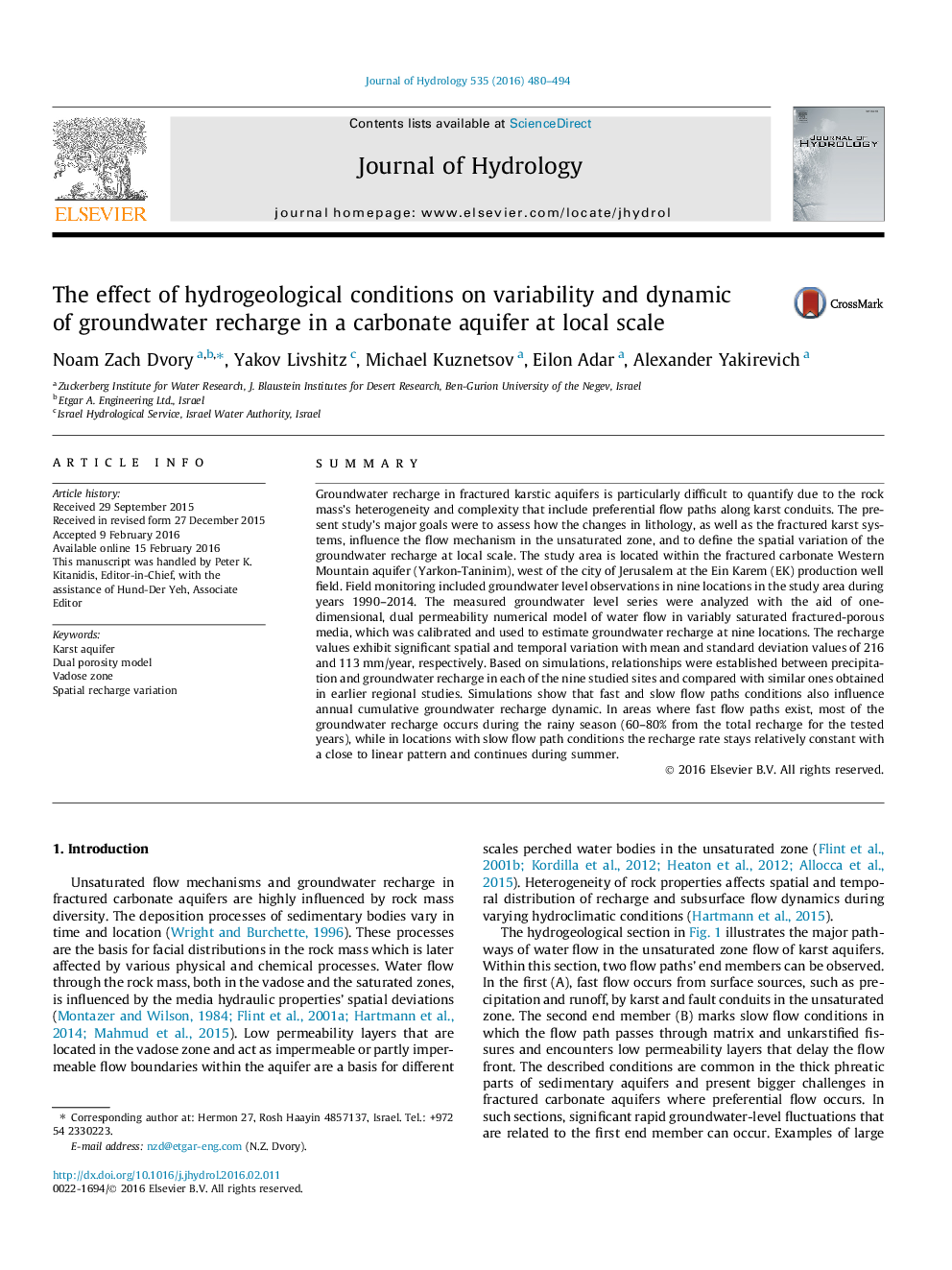| Article ID | Journal | Published Year | Pages | File Type |
|---|---|---|---|---|
| 6410147 | Journal of Hydrology | 2016 | 15 Pages |
â¢Carbonate rock mass is hydrogeological characterization from geotechnical data.â¢The spatial variation of groundwater recharge is described as a function of rain.â¢The annual cumulative groundwater recharge dynamic is examined.
SummaryGroundwater recharge in fractured karstic aquifers is particularly difficult to quantify due to the rock mass's heterogeneity and complexity that include preferential flow paths along karst conduits. The present study's major goals were to assess how the changes in lithology, as well as the fractured karst systems, influence the flow mechanism in the unsaturated zone, and to define the spatial variation of the groundwater recharge at local scale. The study area is located within the fractured carbonate Western Mountain aquifer (Yarkon-Taninim), west of the city of Jerusalem at the Ein Karem (EK) production well field. Field monitoring included groundwater level observations in nine locations in the study area during years 1990-2014. The measured groundwater level series were analyzed with the aid of one-dimensional, dual permeability numerical model of water flow in variably saturated fractured-porous media, which was calibrated and used to estimate groundwater recharge at nine locations. The recharge values exhibit significant spatial and temporal variation with mean and standard deviation values of 216 and 113Â mm/year, respectively. Based on simulations, relationships were established between precipitation and groundwater recharge in each of the nine studied sites and compared with similar ones obtained in earlier regional studies. Simulations show that fast and slow flow paths conditions also influence annual cumulative groundwater recharge dynamic. In areas where fast flow paths exist, most of the groundwater recharge occurs during the rainy season (60-80% from the total recharge for the tested years), while in locations with slow flow path conditions the recharge rate stays relatively constant with a close to linear pattern and continues during summer.
